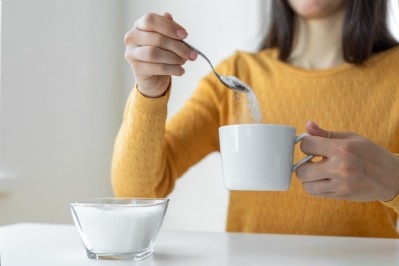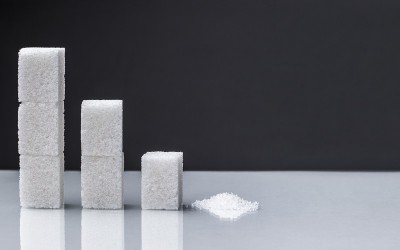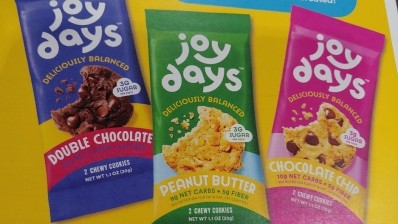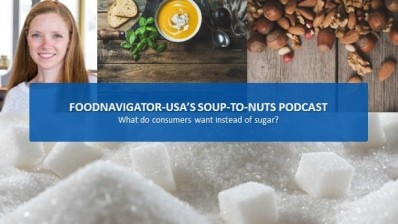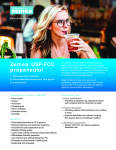Danone, Keurig Dr Pepper tell FDA that sugar reduction requires a different playbook from sodium reduction
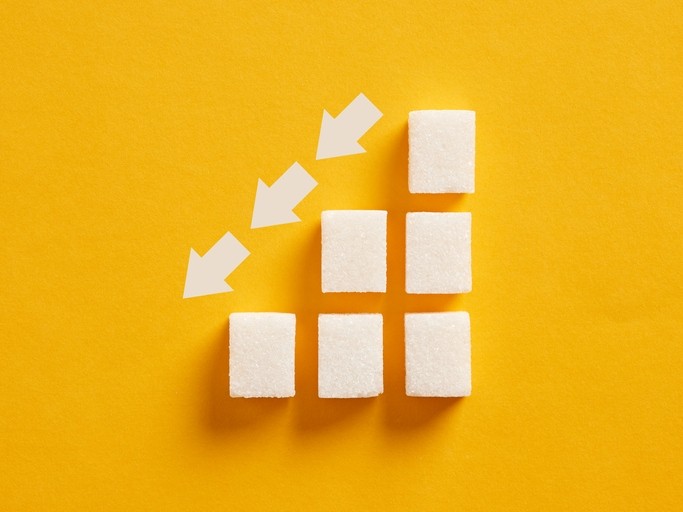
Rather, reducing sugar consumption in the US will require a combination of strategies, including the selective use of low- and no-calorie alternative sweeteners, more aggressive marketing and consumer education promoting healthier, low- or no-sugar options, and the use of new and existing technologies to provide low- and reduced-added sugar options that still “delight” consumers, industry stakeholders explained during an FDA meeting this week.
The agency hosted a three-day virtual meeting and two listening sessions this week to explore strategies to reduce added sugar consumption in the US at the behest of the Biden Administration, which last fall released a National Strategy on Hunger, Nutrition and Health that aims to end hunger in America and increase healthy eating and physical activity by 2030. To help meet this goal, the administration tasked FDA with working with other HHS divisions and USDA to explore “future steps the federal government could take to reduce intake of added sugar, such as developing targets for categories of food, similar to the voluntary targets FDA developed for sodium” reduction.
However, experts gathered at the meeting Nov. 6 argued the approaches successfully employed for reducing sodium consumption in the US may not translate to sugar reduction – necessitating other strategies.
“If you compare and contrast salt and sugar, [research suggests] in both cases lowering concentration will reduce generally appetitive components of sweetness and salt respectively,” acknowledged Paul Wise, an associate member of the Monell Chemical Senses Center. But, he added at the meeting, the “acclamation effects for sugar reduction may be weak compared to acclamation effects for salt,” which suggests “the sweet tooth will be a lot more stubborn than that taste for salt.”
He explained research shows that after three months on a diet 40% lower in sodium, the bliss point for saltine crackers was cut in half, but a similar study he helped model in collaboration with PepsiCo found three months on a 40% reduced sugar diet had no or “very weak” effect on preferred sugar concentration.
He also noted that desire for sugar varies across age groups – with younger and elderly people more likely to want sweeter foods and beverages, which is not the same for salt.
As such, he argued, “from a flavor or perceptual adjustment perspective, [sugar reduction] is going to be more challenging” to manipulate than sodium reduction.
But, he added, sugar reduction on par with or exceeding sodium reduction (consumption of which in the US still remains higher than recommended) is possible.
For example, he explained “there are more and better options for replacing lost sweetness” from a flavor perspective than for lost saltiness. These include rare sugars, like Allulose, that “are expensive, but they taste pretty good,” and companies are becoming more sophisticated in blending non-sugar sweeteners to meet consumer taste requirements without significantly raising prices.
He also pointed to research showing US adults increasingly want less sweet products. For example, he said, reviews from Amazon and other sites found complaints about products being too sweet were 25 times more common than those that products were not sweet enough. This, he said, suggests sweetness can often be reduced, even to noticeable degrees, without affecting liking – although, he added, it depends on the food or beverage.
Flavors typically paired with sugar convey sweetness on their own
Brands also are reducing sugar without negatively impacting perceived sweetness or taste by strategically selecting flavors that are associated with sugar-sweetened products or downplaying sour or savory notes, said Erin Alexander, VP, nutrition, science and user experience at Danone North America.
She explained that “certain flavors are often paired with sugar sweetened products, like a vanilla flavor, which is well established that if you give someone a straight vanilla flavor in water, our brain associates it as having some sweetness because of our experience of eating products that have vanilla in sugar.
“We can use these types of interactions to reduce the sugar in our products by increasing the flavor intensity. This creates a great tasting product while again being able to reduce added sugar.”
Danone also has been able to reduce the added sugar in its yogurt by choosing a culture or bacteria strain that leads to less sour notes in the yogurt, she added.
Ultra-filtration can also help reduce sugar in dairy without impacting the flavor or taste, Alexander said.
“It is very successful in the marketplace… our Two Good products have 80% less sugar than the category standards and consumers are responding very positively,” she said.
Thanks to these efforts and others, Alexander said Danone is “well on track” to meet its commitment to have less than 10 grams of total sugar per 100 grams in its US children’s product by 2030. The company made the commitment as part of the White House Conference on Hunger, Nutrition and Health.
Keurig Dr Pepper reduces sugar intake by promoting better-for-you alternatives
Renovating and innovating products with less sugar is not the only way to reduce sugar consumption – according to Melanie Condon, director of sustainability at Keurig Dr. Pepper, another effective strategy is to crowd out sugary options with better-for-you alternatives.
To encourage consumers to buy healthier options without sacrificing sales, Keurig Dr. Pepper is working with retailers to increase distribution and velocities for low- and no-sugar beverages.
The company teamed with Stop & Shop in the Northeast to market better food and beverage option sin under-resourced communities. Beginning in 2022, Keurig Dr Pepper tested different in-store marketing and merchandising strategies for its water brands, including end caps, pallet drops, at the checkout cooler and along a wall near an in-store retail dietitian’s office.
“We had signs that said better-for-you products are here … we had shelf guides and different price promotions” that were tracked over time to measure sales and identify the best display and marketing strategies.
“The end result was those items that we had on display … had higher sales compared to the year before. And equally important was that the total beverage sales around that time stayed the same. So, what that showed us is that when you position and merchandise these options, consumers can gravitate toward them and it won’t necessarily hurt any overall sales,” but it will reduce overall added sugar consumption, she said.
During the pilot, Condon added she was surprised at how effective working with retail dietitians was in terms of promoting products in a way that resonated with the community.
“We will continue on next year to find areas where we can educate ourselves as well as educate communities with our retailers through this dietitian network,” she added.
